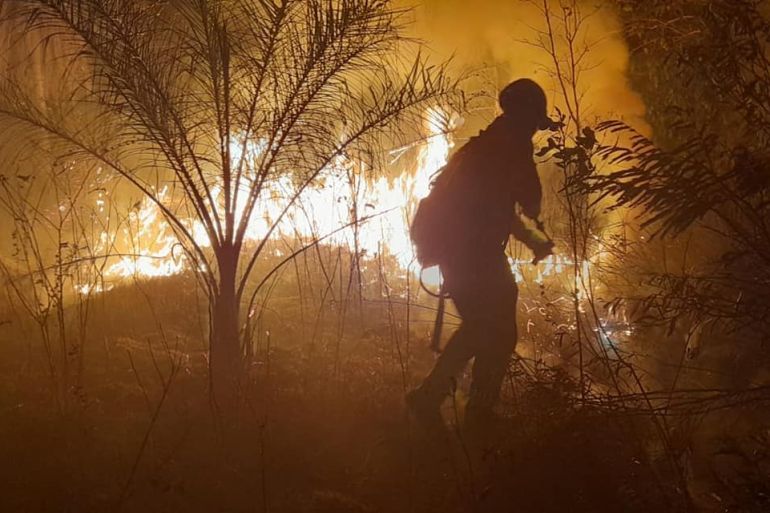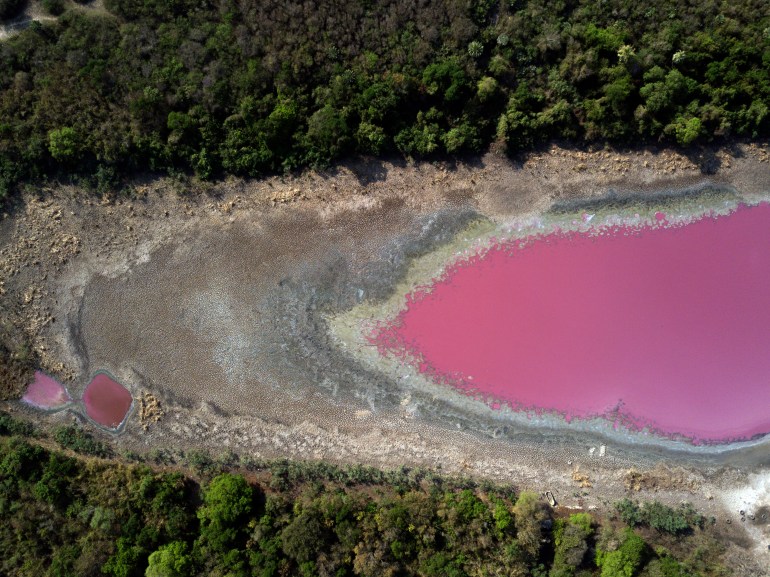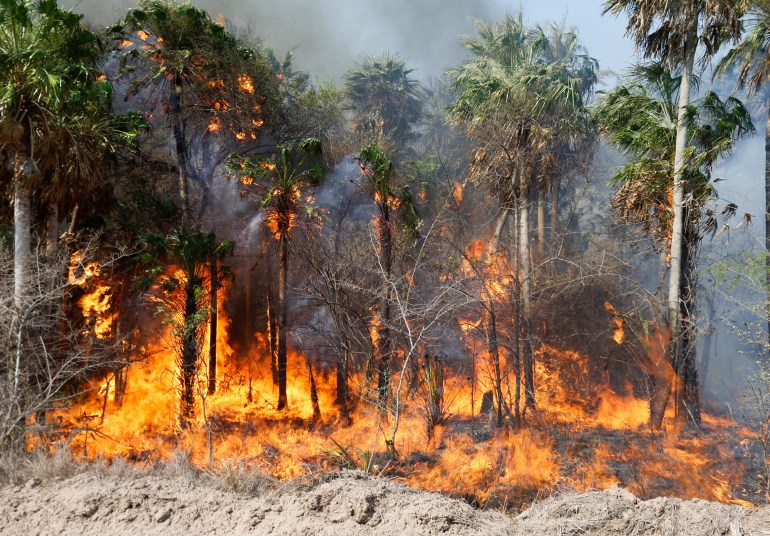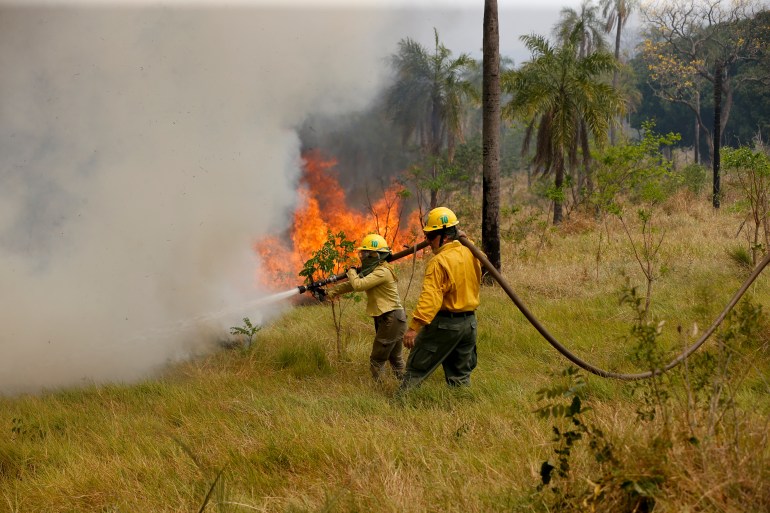Paraguay wildfires threaten Indigenous land and protected forests
‘High temperatures, strong winds, low humidity’ create ideal conditions for wildfires across Paraguay.

Asuncion, Paraguay – Paraguayan emergency services are battling fierce wildfires for a third consecutive year as a severe drought and a winter heatwave hit the South American country.
Vast areas of Paraguay have been affected, with blazes concentrated in the northeastern administrative departments of Concepcion and Amambay. Thick smoke has reached the capital Asuncion, leaving the sky yellow and severely reducing air quality.
Keep reading
list of 3 itemsThe Greek wildfires: What went wrong and what can be fixed?
Why did wildfires claim so many lives in Algeria?
Fires have been seen in at least five protected forested areas with 70 percent of the Cerro Cora National Park, a 5,836-hectare (14,420-acre) area of immense ecological and historical importance, consumed by flames, according to official figures.
“High temperatures, strong winds, and low humidity”, combined with an ongoing drought, were creating ideal conditions for wildfires Dario Perez, a specialist in forest fires with Paraguay’s volunteer fire service, told Al Jazeera.
The regional drought has seen the Parana River – South America’s second-longest waterway, which flows through Brazil, Paraguay, and Argentina – drop to its lowest level in 77 years.

The current severe drought conditions may have links to broader environmental issues, said Roger Monte Domecq, professor of hydrology at the National University of Asuncion.
“We know that droughts are natural, they’ve always happened, but they’re now getting worse due to land-use change and deforestation in the region, and climate change.”
In 2019, devastating wildfires burned 320,000 hectares (790,720 acres) of forested areas in Paraguay. In 2020, another 150,000 hectares (370,650 acres) of forest were affected according to INFONA.
“I must emphasise that 90 to 95 percent of the wildfires in Paraguay are started by humans,” said Perez. “They are fires that get out of control: accidentally or perhaps deliberately.”
He said while burning rubbish was the principal cause of blazes in urban areas, fires in rural Paraguay were mostly produced by agricultural burning practices used to renew pastureland for cattle ranching.
Fires have also been linked to the vast illegal cannabis plantations that dot Paraguay’s national parks.

Recent investigations by Paraguayan media outlet El Surtidor put into question the efficiency of the Paraguayan state’s actions to investigate and prosecute parties provoking wildfires, with figures linked to politics escaping charges. State representatives did not respond to requests for comment.
Indigenous peoples have been some of the main victims of the blazes. The PaiTavytera people in Paraguay’s northeast live at continual risk.
“My community has never been affected this severely by wildfires,” Silvino Mendoza, leader of the Cerro Akangue community, told Al Jazeera. Multiple houses were destroyed in Cerro Akangue by the flames in recent days.
The Pay Tavytera’s most sacred site, the forested hill of Jasuka Venda, is also at risk – with several fires breaking out there. Community leaders have petitioned the state to support their efforts to protect their territory, but have not received a concrete response.
Perez said the volunteer firefighters were working collaboratively with public institutions, but work was stymied because there are few resources.
“We have highly trained people, but the problem is that they need resources to travel, for logistics, they need tools,” he said.

State institutions have acted to reinforce firefighting capacity on Paraguay’s remote border with Bolivia. Fires in the neighbouring country have already affected 280,000 hectares (691,880 acres) of forest according to Bolivian authorities. On Monday, flames from those wildfires crossed into Paraguay.
These outbreaks threaten Paraguay’s section of the Pantanal, the world’s largest wetland and home to enormous biodiversity. Fires in 2019 burned 61,000 hectares (150,731 acres) of the delicate ecosystem, according to NGO Guyra Paraguay.
Fires in this area also threaten the Paraguayan section of the Gran Chaco, South America’s second-largest forest. This represents a grave danger for the Ayoreo Totogosobie, the continent’s last Indigenous people living in voluntary isolation outside the Amazon. These tribes must already contend with the highest levels of deforestation in the world according to NGO Earthsight.
The long-term effects of the widespread blazes are of grave concern. The Ministry of Environment and Sustainable Development (MADES) stated in a press release that areas such as the Cerro Cora National Park could take 20 years to recover.
A recent report published by the National University of Colombia showed that Paraguay is one of the countries in Latin America where most forest is permanently lost after wildfires, with native forest not managing to re-establish itself or land being converted for agricultural use.
Although incoming cooler weather promises to ease the current situation, firefighter Perez said Paraguay’s fire season is not near its end.
“The outlook is for these adverse conditions to continue,” he said. “It will rain in a couple of days’ time, which will reduce intensity. But that will only last two or three days. After that, we’ll be back in a critical situation.”